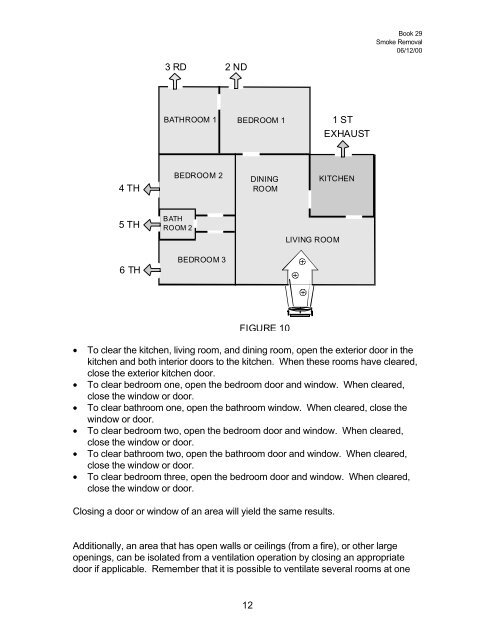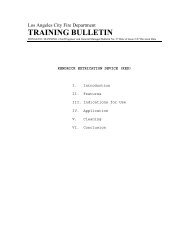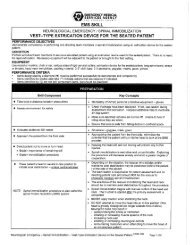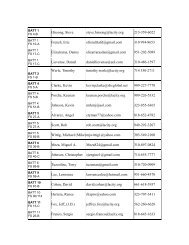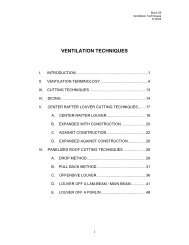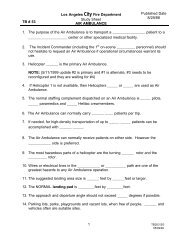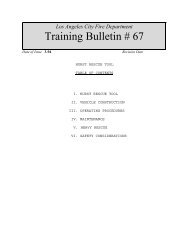SMOKE REMOVAL I. INTRODUCTION ... - LAFD Training
SMOKE REMOVAL I. INTRODUCTION ... - LAFD Training
SMOKE REMOVAL I. INTRODUCTION ... - LAFD Training
You also want an ePaper? Increase the reach of your titles
YUMPU automatically turns print PDFs into web optimized ePapers that Google loves.
4 TH<br />
5 TH<br />
6 TH<br />
3 RD<br />
BATHROOM 1<br />
2 ND<br />
BEDROOM 1<br />
12<br />
1 ST<br />
EXHAUST<br />
BEDROOM 2 KITCHEN<br />
DINING<br />
ROOM<br />
BATH<br />
ROOM 2<br />
BEDROOM 3<br />
FIGURE 10<br />
LIVING ROOM<br />
Book 29<br />
Smoke Removal<br />
06/12/00<br />
• To clear the kitchen, living room, and dining room, open the exterior door in the<br />
kitchen and both interior doors to the kitchen. When these rooms have cleared,<br />
close the exterior kitchen door.<br />
• To clear bedroom one, open the bedroom door and window. When cleared,<br />
close the window or door.<br />
• To clear bathroom one, open the bathroom window. When cleared, close the<br />
window or door.<br />
• To clear bedroom two, open the bedroom door and window. When cleared,<br />
close the window or door.<br />
• To clear bathroom two, open the bathroom door and window. When cleared,<br />
close the window or door.<br />
• To clear bedroom three, open the bedroom door and window. When cleared,<br />
close the window or door.<br />
Closing a door or window of an area will yield the same results.<br />
Additionally, an area that has open walls or ceilings (from a fire), or other large<br />
openings, can be isolated from a ventilation operation by closing an appropriate<br />
door if applicable. Remember that it is possible to ventilate several rooms at one


